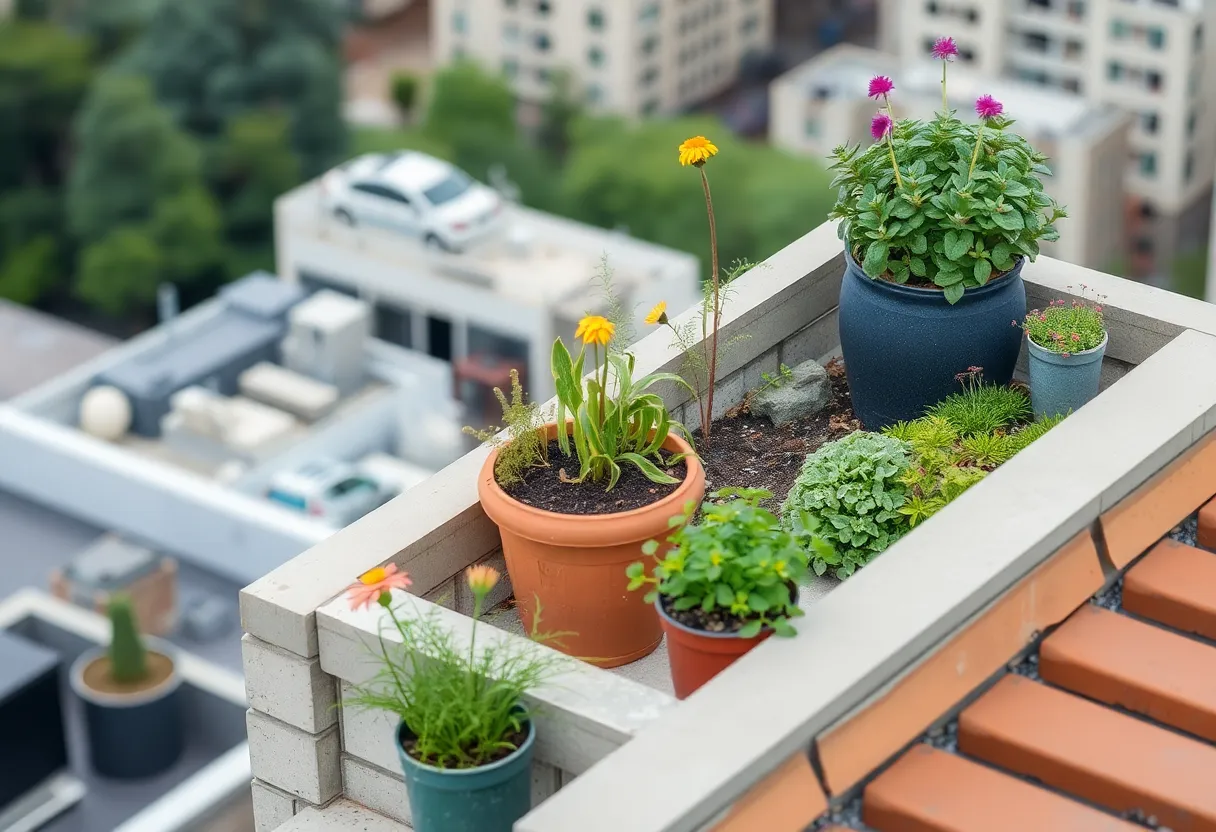What Are the Best DIY Techniques for Creating a Roof Garden?
Creating a roof garden is an innovative way to utilize otherwise unused space. It enhances visual appeal, promotes biodiversity, and can even afford you a tranquil retreat amid urban surroundings. This article delves into effective DIY techniques for establishing a successful roof garden.
Planning Your Roof Garden
Prior to starting your roof garden, considerable planning is essential. This stage lays the groundwork for a successful project.
Assessing Structural Integrity
First, check that your building can support the weight of a roof garden, which includes pots, soil, and water. Consult a structural engineer if necessary to ensure safety.
Choosing a Design
Decide on the layout and style. Will it be a decorative garden, vegetable patch, or a combination? Draft a plan outlining the size, shape, and primary features of the garden.
Selecting the Right Plants
The selection of plants is pivotal. Factors like climate, sunlight, and wind exposure play a significant role.
Understanding Microclimates
Analyze specific areas of your roof to identify microclimates. Some spaces may experience full sun, while others might be shadier or windier. Choose plants to match these conditions.
Choosing Suitable Plants
Select hardy plants such as herbs, succulents, or native species, known for their drought resistance and ability to thrive in rooftop environments. Consider shallow-rooted plants for pots to minimize weight and ensure easier maintenance.
Soils and Drainage Solutions
A successful roof garden requires excellent drainage and soil quality. Without these, plants are at risk of root rot.
Utilizing Lightweight Soil
Use lightweight soil mixes designed for container gardening. These mixes often include organic materials like coconut coir, peat, and compost, ensuring good aeration and water retention.
Implementing Effective Drainage Systems
Install drainage systems, such as a layer of gravel or a drainage mat, to prevent water accumulation. This step is critical in promoting healthy plant growth.
Container Selection and Arrangement
Containers are a core component of a roof garden, particularly in a limited space. Choosing and arranging them appropriately enhances both form and function.
Choosing Containers
Select containers that offer good drainage and are appropriate for the plants’ needs. Options include ceramic pots, wooden planters, and fabric containers. Ensure they are lightweight to ease structural load.
Arranging Containers
Arrange containers strategically to maximize sunlight exposure and create visual interest. Consider varying heights and staggered arrangements to add depth to your design.
Watering Techniques
Regular watering is essential for any garden, particularly on roofs where wind can dry out soil rapidly. Implementing efficient watering techniques can optimize resource use.
Automatic Irrigation Systems
Integrate a drip irrigation system. It efficiently delivers water directly to the plant roots, reducing waste and ensuring adequate moisture levels.
Using Water-Saving Techniques
Consider using a rainwater harvesting system to collect and store water, providing an environmentally-friendly watering solution.
Additional Features to Enhance Your Roof Garden
Enhancing your garden with additional features increases its functionality and attractiveness.
Creating Seating Areas
Designate space for seating by incorporating benches or chairs. This transforms the garden into a relaxing retreat.
Incorporating Garden Structures
Implement structures such as trellises or pergolas to support climbing plants and provide shade. This design element can also create a cozy atmosphere.
Maintaining Your Roof Garden
A well-planned maintenance schedule ensures the longevity and health of your garden.
Regular Inspections
Conduct periodic checks for signs of pests or diseases. Early detection is vital for mitigating potential damage to your plants.
Seasonal Pruning and Fertilizing
Pruning plants seasonally promotes healthy growth. Similarly, applying organic fertilizers at recommended intervals boosts nutrient availability and soil health.
Final Considerations
Creating a roof garden is both creative and practical. While it demands upfront effort and planning, the rewards bring beauty, nourishment, and sustainability to urban living.
In summary, with adequate preparation, thoughtful plant selection, and careful maintenance, a roof garden can develop into a vibrant, green space, redefining the landscape and improving quality of life.
Author: STAFF HERE CLINTON
The CLINTON STAFF WRITER represents the experienced team at HEREClinton.com, your go-to source for actionable local news and information in Clinton, Laurens County, and beyond. Specializing in "news you can use," we cover essential topics like product reviews for personal and business needs, local business directories, politics, real estate trends, neighborhood insights, and state news affecting the area—with deep expertise drawn from years of dedicated reporting and strong community input, including local press releases and business updates. We deliver top reporting on high-value events such as the Festival of Discovery, Clinton Community Day, and performances at the Whitten Center Amphitheater. Our coverage extends to key organizations like the Clinton Area Chamber of Commerce and the Laurens County Historical Society, plus leading businesses in manufacturing and education that power the local economy such as Milliken & Company and Presbyterian College. As part of the broader HERE network, including HEREAiken.com, HEREBeaufort.com, HEREChapin.com, HERECharleston.com, HEREClinton.com, HEREColumbia.com, HEREGeorgetown.com, HEREGreenwood.com, HEREGreenville.com, HEREHiltonHead.com, HEREIrmo.com, HEREMyrtleBeach.com, HERENewberry.com, HERERockHill.com, and HERESpartanburg.com, we provide comprehensive, credible insights into South Carolina's dynamic landscape.




 Mays Contracting
Mays Contracting

